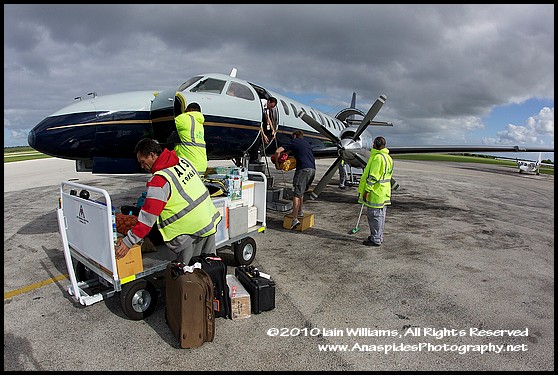Vava'u, Kingdom of Tonga - Photographing Humpback Whales
 Tuesday, August 17, 2010 at 7:16PM
Tuesday, August 17, 2010 at 7:16PM I had joined with three other individuals to photograph humpback whales and calves in the waters around Vava'u in the northern section of the Kingdom of Tonga in the south Pacific. Vava’u is 50 minutes flight time north of the capital iand s nothing to get excited about. Like most Pacific Nations, Tonga has its problems ranging from social neglect and environmental degradation to poorly maintained infrastructure. Unlike Papua New Guinea and the Solomon Islands, Tonga appears to havereplaced much of it’s subsistence-based culture with first world consumerism.
However, I wasn’t here to make pass judgement on social integration – I was here to observe and photograph Humpback Whales (Megaptera novaeangliae) which pass through this region annually to breed, give birth and fatten their calves before the migration south to Antarctica.
 Landing Difficulty - Go Arounds
Landing Difficulty - Go Arounds
I’ve flown in many types of small aircraft from military helicopters to small Cessna Caravans, Beavers and Twin Otters, but this aircraft was a new experience. I was facing a long slender cigar shaped tube equipped with two turbo props. The nose on this machine appeared to immeasurably long and for some reason didn't look at all graceful.
LEFT: I wasn't too impressed with this flying machine, a Fairchild Metroliner 11 of mid 1970's vintage - It could have been renamed the "Vomit Comet" for its propensity to rock & roll in poor flying weather (24 mm lens).
Climbing into the tube was not easy, especially carrying photographic equipment. As per usual, I was overloaded and the pilot in command was nice enough to say that if I can carry it I can load it! I had to stoop and almost drag myself and gear to the allocated seat at the rear of the fuselage. Sitting in the sheepskin covered passenger seat of this 19 seat aircraft reminded me of sitting in a 1970’s reclining chair; my back was at an almost 45 degree angle and my feet were pushed up against the rear of seat in front – thank goodness I am not overweight! One camera bag was under my legs and the other was perched on my knees.
 Worse to Come….
Worse to Come….
Worse was to come! 40 minutes into the flight we encountered poor weather; the aircraft was buffeted upwards and downwards repeatedly like a roller coaster as it flew into air pockets of warm air being driven upwards by a freshening tropical storm. This wasn’t the worse storm I had flown in; I still have“fond” memories of flying in the Solomon Islands during an electrical storm but, with every lurch my stomach (or should I say contents of) churned like milk in a milk processing plant. Finally Vava’u came into view (I think it was Vava”u - all I could see was cloud). The landing approach began – flaps 10, 20, 30, gear down, throttle steady. Looking from my small porthole window I saw palm trees lurch into view, followed by the tell-tail Claxton of the ground proximity warning alarm. The Pilot throttled up, landing gear was raised and flaps retracted – it was the first go around of the day! This was to continue a further 4 times as the pilot unsuccessfully attempted to land in Vava’u in almost zero visibility. We were advised that if conditions did not improvewe would need to return to the mainland. No doubt this decision had something to do with “bingo fuel”, that vital volume of avgas that is required to allow a safe transit to an alternate air field.
LEFT: French photographer Flore looks back toward the camera as we taxi for take off in the Metroliner (24 mm lens).
My problem was not that the pilot was incompetent, but that with every go around I was increasingly feeling more ill due to the zero visibility and continual buffeting. I began to wonder if the nickname for this aircraft would soon be the “Vomit Comet”
Finally, on the sixth attempt the pilot saw a break in clouds, descended quickly to almost sea level and made an approach from the opposite end of the runway. Coral reefs followed by a steep cliff and coconut palms sprang briefly into view as the aircraft powered in for a fast approach to the runway. Touch down, unlike in an American football game, was uneventful and as we rolled and bumped along the tarmac, I noted the rescue tender, engine running and crew alert, standing by along the runway edge.
Day 1 – I had arrived.... More to follow on the whales soon.


